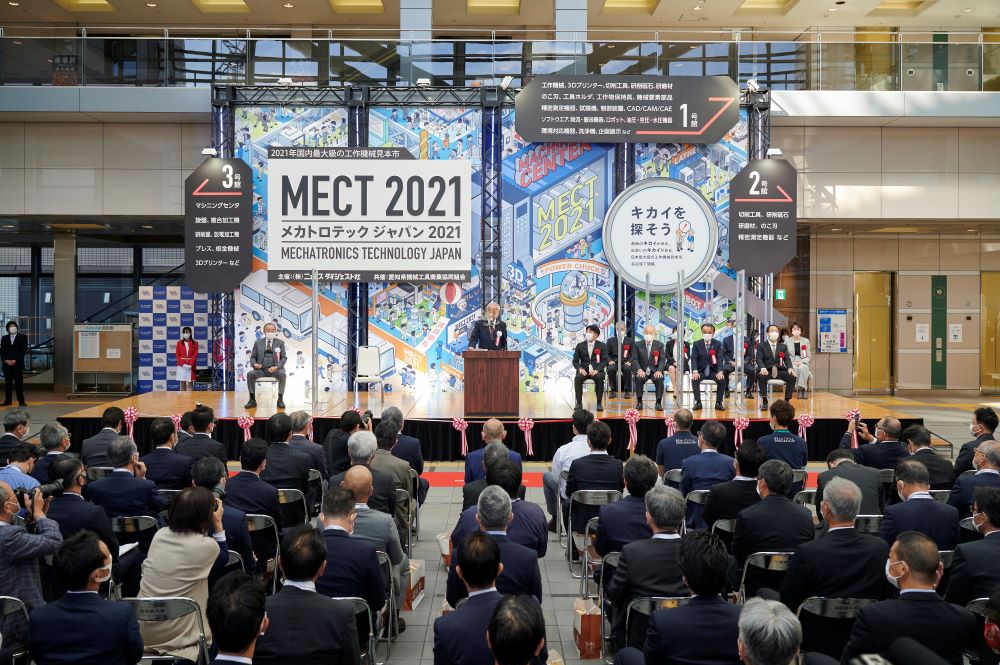
- News
- Basics
- Products
- JP Job shop
- Exhibition
- Interview
- Statistic
- PR
- Download
- Special contents
News
October 2, 2023

Almost four years have passed since the COVID-19 pandemic began in earnest in the spring of 2020. It seems like a long time, or like it happened in the blink of an eye, or even like the chaos of the early stages of the pandemic was just a bad dream. MECHATRONICS TECHNOLOGY JAPAN (MECT), organized by our company, is a machine tool exhibition held every two years in Nagoya, Japan, and the last MECT was held in the middle of a pandemic in the fall of 2021. Looking back, I am impressed with how the show was held, and to be honest, I felt like we were walking on a tightrope. To sum it up, I would venture to say that the manufacturers’ desire for visitors to see the latest machines and the users’ desire to see the latest machines outweighed any possible risks. Miraculously, we were able to hold an exhibition that was highly satisfactory to both exhibitors and visitors. But it was only a miracle and an emergency case. Now that two years have passed and things have returned to something close to normal, what happened then is not so helpful. The exhibition held four years ago, in 2019, was too far away to be useful, and there was a big pandemic swell in between, so the continuity is lost.
However, even if it is not a direct reference, it is possible to recognize the extent of the change by comparison.
What I, personally, think has changed the most is that, although not limited to machine tool exhibitions, I no longer feel strange about daring to call a face-to-face exhibition a “real exhibition”. In other words, the concept or system of a “virtual exhibition” or “online exhibition” as the counterpart of a “real exhibition” has become widespread (whether it works or not is another story).
Dr. Yoshiharu Inaba, Chairman of the Japan Machine Tool Builders’ Association (Chairman of FANUC), pointed out that “eventually, a hybrid of face-to-face exhibition and online exhibition may become the standard”. In short, visitors gather relevant information on the Internet in advance, see the products and technologies they actually want to see at the exhibition venue, and then use the Internet again to summarize the information after the event. By the way, the official website of MECT does not promote itself as an online exhibition, but the information on the products exhibited is quite extensive, so please take a look at it.
Now, if we imagine the future roughly, it’s hard to imagine that in the future we don’t need to gather information in advance and summarize and confirm information after the events with the help of the internet. Neither do I, and I’m sure most others. As Dr. Inaba points out, it is likely that a system that mixes the physical and online worlds in some way to improve visitor satisfaction is becoming a standard trend. Regarding these issues, there are already many existing web marketing methods such as “OMO (online-merge-offline),” “O2O (online-to-offline),” and “omnichannel (a method of increasing contact with customers regardless of online or offline to promote sales). So it would be good to use these methods in each company and every exhibition ….
The key is to determine what the customer’s primary needs are and to provide services that meet those needs. It is not enough to just get started, as in: “Online exhibitions are easy to organize and the costs are not high, so let’s do it!” A cafeteria cannot thrive in a place where there are no hungry people. If you are going to do something, it must be “necessary” rather than “possible. This is a very obvious statement that can be applied to any business.
Shu Yasumi, Editor-in-Chief
September 4, 2023
July 11, 2023
September 25, 2025